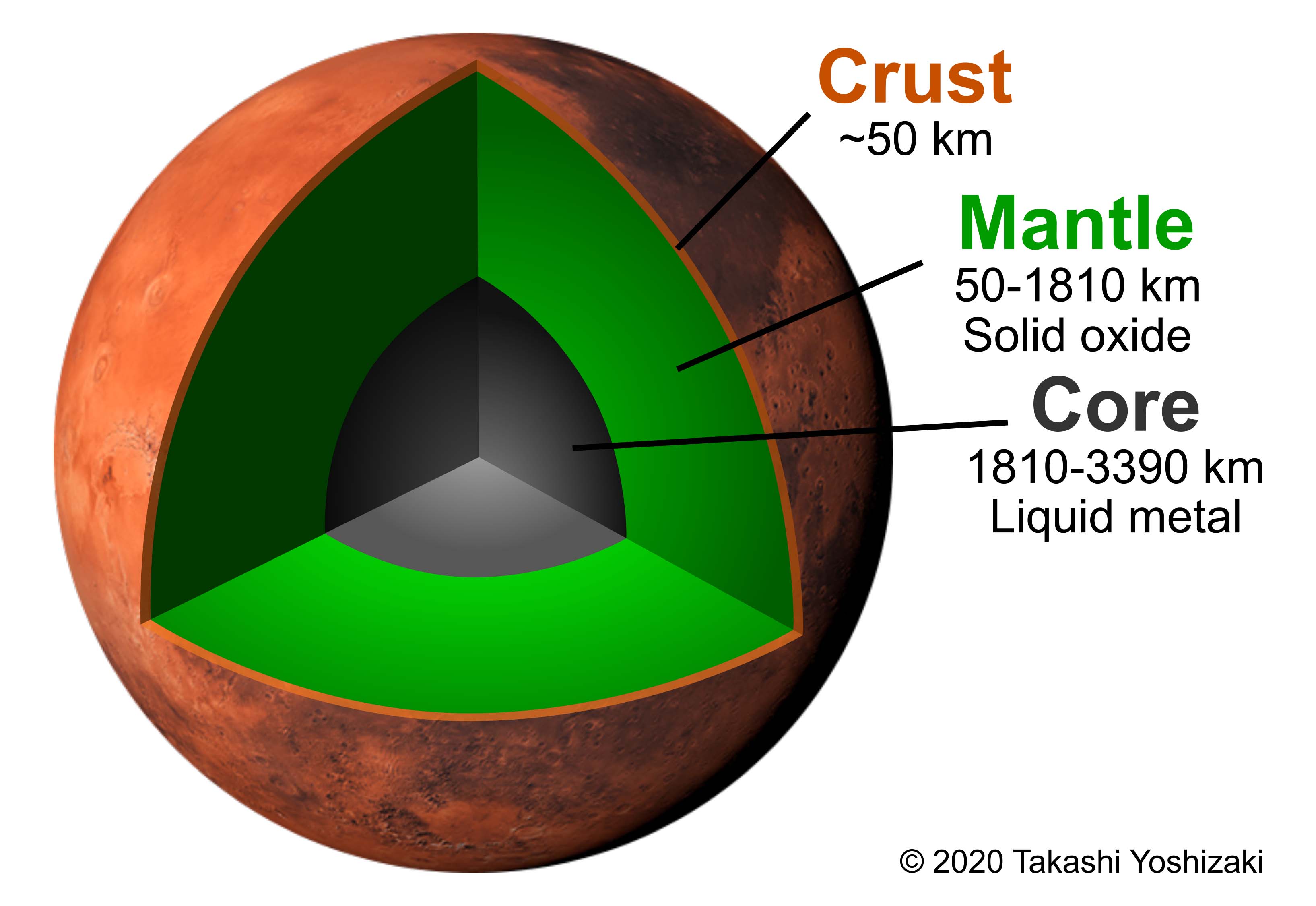More than One Way to Skin A Planet
A new compositional model identifies layers inside Mars
NASA’s InSight mission is steadily monitoring seismic activity from its lonely base on the surface of Mars. Preliminary reports, released on February 24, 2020, show a moderately active planet with seismic movement somewhere between that of Earth and the Moon. What’s causing all that movement, and what the planet is made of is still the subject of intense study, but research from the University of Maryland is helping to fill in the blanks.
Bill McDonough, professor of geology at UMD and his colleague Takashi Yoshizaki of Tohoku University developed a new compositional model that identifies components of Mars’ core and predicts the depth of the different layers within the planet’s interior. Their work suggests that moderate amounts of sulfur, oxygen and hydrogen are dissolved in an iron and nickel-rich core. They estimate the boundary between the core and the mantle to be some 1,800 kilometers (1,118.5 miles) beneath the surface.
The composition and interior structure of rocky planets can reveal the conditions of their formation. This information can also give clues to how and when the dense core separated from the less dense silicate material that makes up a planet’s middle layer, or mantle, as well as how much mantle was used to make the outer layer, or crust, and when it formed.
Early astronomers used the distances between planets and the orbital periods of planets and their moons to determine the size, mass and density of these bodies. Today, spacecraft can get very precise measurements of the shapes and gravitational fields of the planets they orbit.
McDonough combined such measurements from Mars with physical observations, and data from chondritic meteorites, which are the primitive building blocks of the planets, as well as Martian surface rocks that were ejected from the planet during asteroid or comet impacts and eventually landed on Earth as meteorites.
By analyzing these data together, McDonough and his colleagues determined that Mars’ core is only about one-sixth of its mass. By contrast, Earth’s core is one-third of its mass. These findings are consistent with Mars having more oxygen atoms than the Earth, a smaller core and a rusty red surface. The researchers also found higher abundances of volatile elements such as sulfur and potassium in Mars than the Earth, but less of these elements than in chondritic meteorites, which are mixtures of rock and metal composed of mineral grains that accumulated from the early solar nebula.
By explaining what Mars is made of, the new model proposes a density distribution inside the planet, but the actual distribution of density in its interior remains unknown. Once the data from NASA’s seismometers is more thoroughly analyzed, the seismic profile should provide critical insight into the distribution of density and interior structure. When a quake rocks a planet, sound waves travel through its interior at speeds controlled by its internal composition and temperature. Strong contrasts in density such as that found in rock versus steel cause sound waves to respond differently, revealing the core-mantle boundary depth and details of the likely composition of these different layers.
By the end of the 19th century, scientists hypothesized a metallic core inside the Earth, but it was not until 1914 that seismologists demonstrated its existence at a depth of 2,900 kilometers (1,800 miles) from the surface. The first clean seismometer recordings from Mars were obtained by the SEIS instrument on NASA’s InSight lander which was placed on Mars on Dec. 19, 2018. UMD’s Nicholas Schmerr and Vedran Lekic, both from the Department of Geology, were on the team that analyzed the resulting data. They identified the source location and magnitude of three low-frequency marsquakes with signatures similar to earthquakes caused by plate tectonics.
Further analysis of data from the seismometer on NASAs InSight mission should define the depth to the boundary between the Martian core and mantle. Such a direct measurement will enable McDonough to test his new compositional model of the red planet and validate the method for investigating the make up of other planets.
Written by William McDonough
###
This research is supported by the Japanese Society for the Promotion of Science (Award No. JP18J20708), The International Joint Graduate Program in Earth and Environmental Sciences, Tohoku University, Division for Interdisciplinary Advanced Research and Education, Tohoku University, and the National Science Foundation (Award No. EAR1650365). The content of this article does not necessarily reflect the views of these organizations.
The research paper “The composition of Mars,” Takashi Yoshizaki and William F. McDonough was published in the the March 15, 2020, issue of Geochimica et Cosmochimica Acta.
Writer: Kimbra Cutlip
Media Relations Contact: Abby Robinson, 301-405-5845, abbyr@umd.edu
University of Maryland
College of Computer, Mathematical, and Natural Sciences
2300 Symons Hall
College Park, Md. 20742
www.cmns.umd.edu
@UMDscience
About the College of Computer, Mathematical, and Natural Sciences
The College of Computer, Mathematical, and Natural Sciences at the University of Maryland educates more than 9,000 future scientific leaders in its undergraduate and graduate programs each year. The college's 10 departments and more than a dozen interdisciplinary research centers foster scientific discovery with annual sponsored research funding exceeding $175 million.








